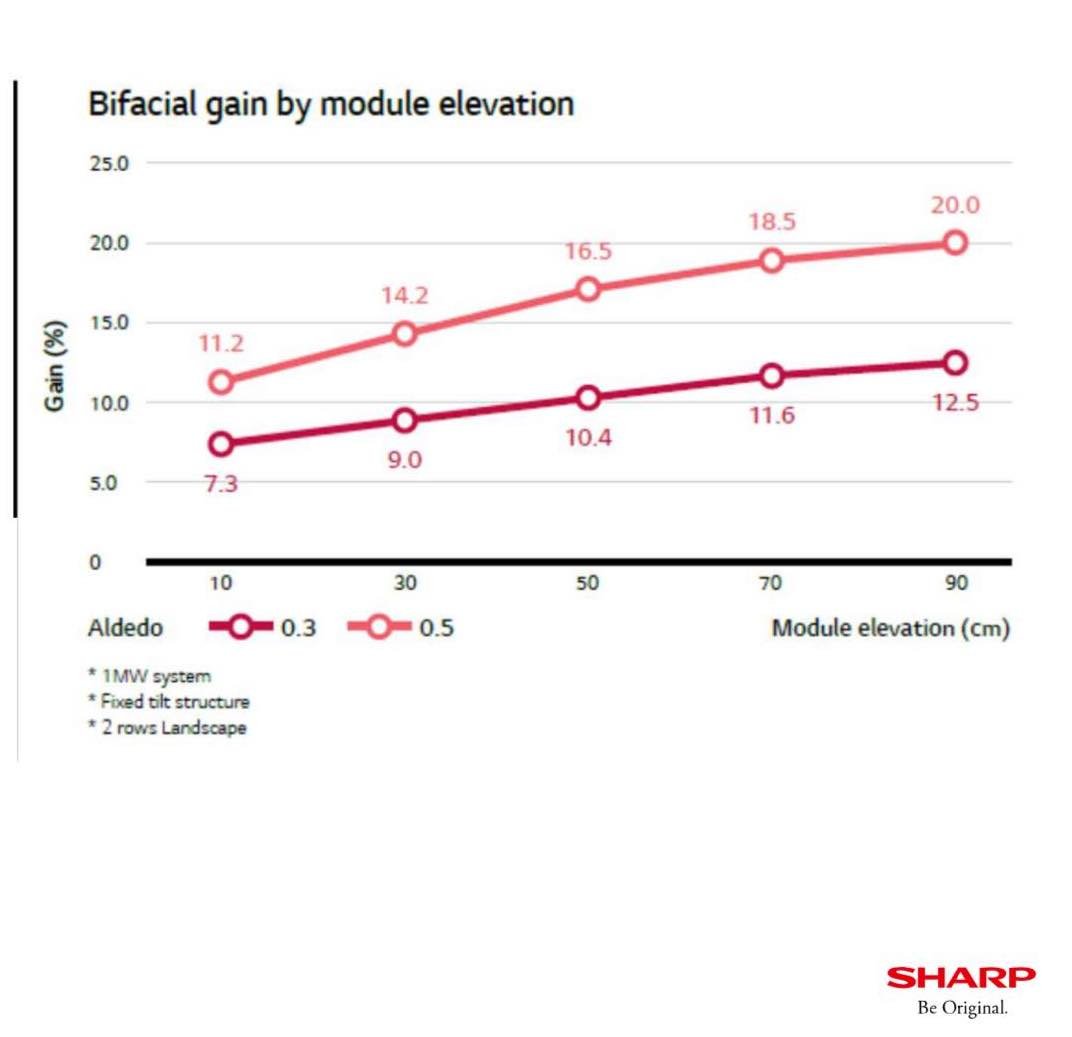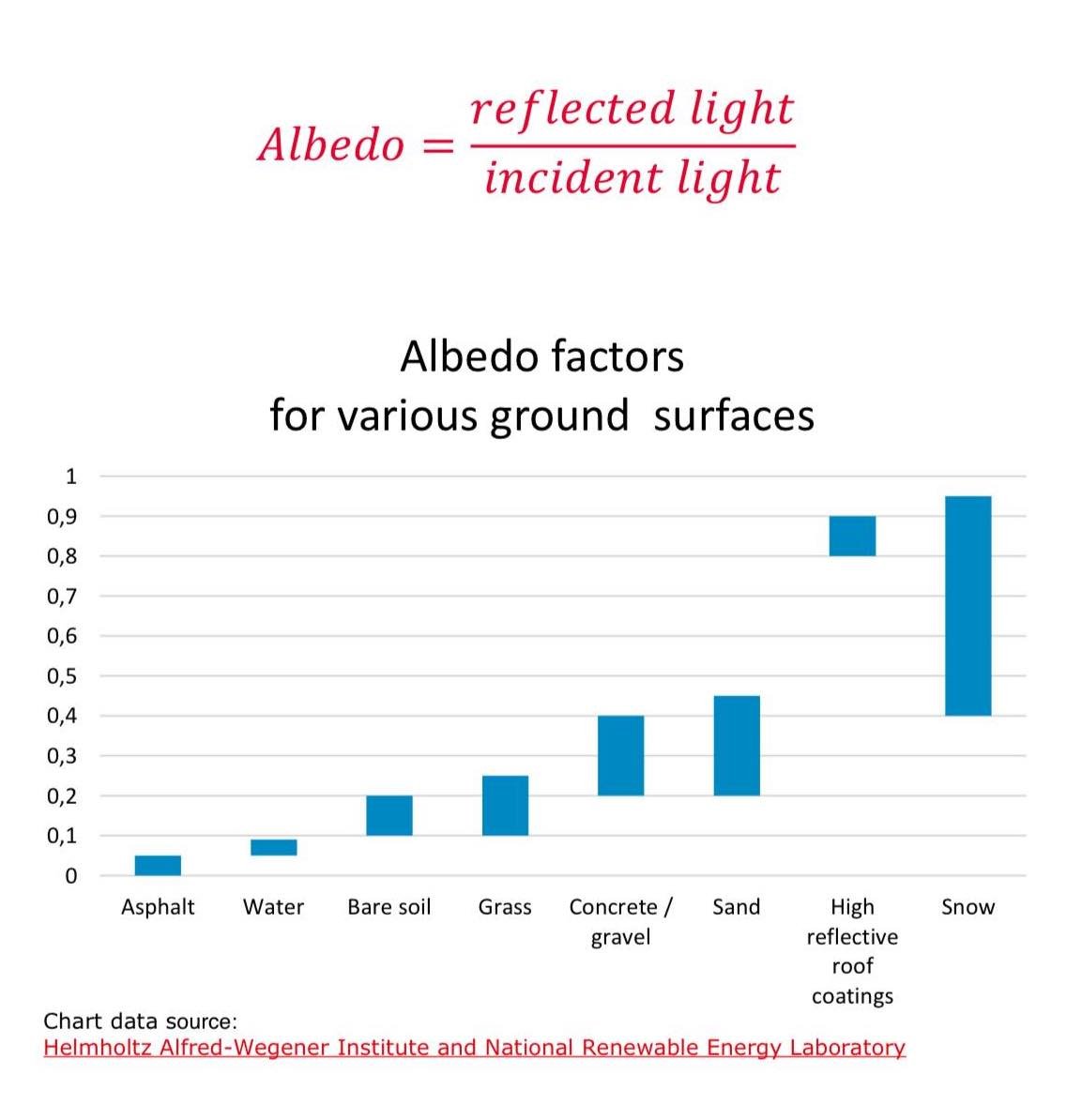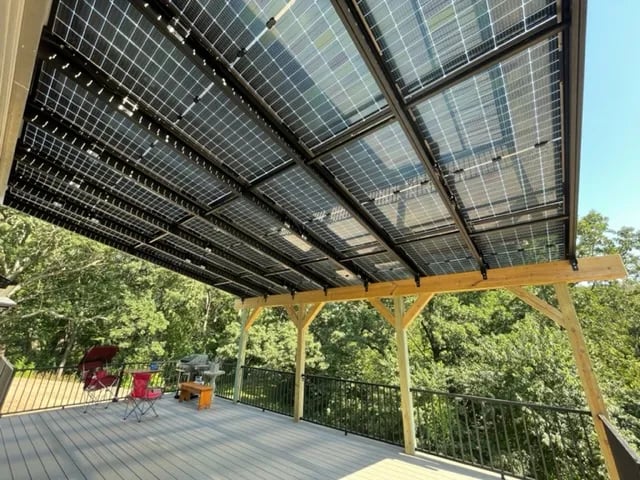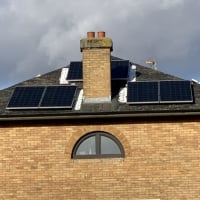We’d like to remind Forumites to please avoid political debate on the Forum.
This is to keep it a safe and useful space for MoneySaving discussions. Threads that are – or become – political in nature may be removed in line with the Forum’s rules. Thank you for your understanding.
📨 Have you signed up to the Forum's new Email Digest yet? Get a selection of trending threads sent straight to your inbox daily, weekly or monthly!
is solar worth it for me?
Comments
-
If only it were that easy. OpenSolar (Industry standard solar design tool) assigns albedo gains based on angle, azimuth, slope and aspect for each installation.bob2302 said:That second link doesn't support your point. If the difference were due to the panels being bifacial the biggest boost would be on the corner panels with a much smaller boost on the centre panels, but this isn't the case.What the video highlights to me is that the monofocial panel dramatically underperforms the bifacial panels on that roof despite lacking any white reflective background (see below).
Some additional data from the panel manufacturer.bob2302 said:
In my experience when anecdotal results like this appear to conflict with basic physics, it's never the physics that's wrong.

People are already insisting on bifacial panels. It is my hope that every user embraces the technology. Real world performance improvements aside, it is a more ethical product as well (more glass less plastic) with negligible financial premium these days.- 10 x 400w LG Bifacial + 6 x 550W SHARP BiFacial + 2 x 570W SHARP Bifacial + 5kW SolarEdge Inverter + SolarEdge Optimizers. SE London.
- Triple aspect. (33% ENE.33% SSE. 34% WSW)
- Viessmann 200-W on Advanced Weather Comp. (The most efficient gas boiler sold)Feel free to DM me for help with any form of energy saving! Happy to help!1 -
These are intended to be freestanding so the reverse side picks-up reflected or scattered light. The other information you gave is relevant to their intended use. When they are so close to a roof there's very little scope for light hitting the underside.Screwdriva said:
If only it were that easy. OpenSolar (Industry standard solar design tool) assigns albedo gains based on angle, azimuth, slope and aspect for each installation.bob2302 said:That second link doesn't support your point. If the difference were due to the panels being bifacial the biggest boost would be on the corner panels with a much smaller boost on the centre panels, but this isn't the case.What the video highlights to me is that the monofocial panel dramatically underperforms the bifacial panels on that roof despite lacking any white reflective background (see below).
I've already explained to you why that video shows no evidence of any benefit from light hitting the underside - it actually provides strong evidence that it's negligible.
To make this work you would need to add a decent reflector, lift the panels a lot further off the roof and leave gaps between the panels.0 -
Bifacial panels are translucent i.e. allow light to pass through the main body of the panel. This is why many install them on pergolas (see attached). Albedo gains are achieved through reflection of this transmitted light, and to a lesser degree, reflection from the sides of panels.bob2302 said:These are intended to be freestanding so the reverse side picks-up reflected or scattered light. The other information you gave is relevant to their intended use. When they are so close to a roof there's very little scope for light hitting the underside.
I've already explained to you why that video shows no evidence of any benefit from light hitting the underside - it actually provides strong evidence that it's negligible.
To make this work you would need to add a decent reflector, lift the panels a lot further off the roof and leave gaps between the panels.
"High reflective roof coatings" as referenced in the above chart, exponentially increase these gains. If you still believe the technology does not work on roofs, I have nothing more to share to convince you otherwise.
- 10 x 400w LG Bifacial + 6 x 550W SHARP BiFacial + 2 x 570W SHARP Bifacial + 5kW SolarEdge Inverter + SolarEdge Optimizers. SE London.
- Triple aspect. (33% ENE.33% SSE. 34% WSW)
- Viessmann 200-W on Advanced Weather Comp. (The most efficient gas boiler sold)Feel free to DM me for help with any form of energy saving! Happy to help!1 -
NO NO NO...steer clear of Evergreen, there are lots of complaints about them. Your are leasing the roof to them and will be a landlord. You will have to pay for expensive scaffolding etc. when the panels need work.
Please do some research first.0 -
I think you're too late, he's had them installed but by another company. Are you sure you've got the right company with Evergreen though - I've just googled them and they seem legit? And hasn't rent-a-roof virtually disappeared now FIT's gone - it doesn't make sense for anyone.knightstyle said:NO NO NO...steer clear of Evergreen, there are lots of complaints about them. Your are leasing the roof to them and will be a landlord. You will have to pay for expensive scaffolding etc. when the panels need work.
Please do some research first.4.7kWp (12 * Hyundai S395VG) facing more or less S + 3.6kW Growatt inverter + 6.5kWh Growatt battery. SE London/Kent. Fitted 03/22 £1,025/kW + battery £24950 -
Clearly you don't have more to share because you posted every scrap of misleading and irrelevant information before mentioning that they are translucent.Bifacial panels are translucent i.e. allow light to pass through the main body of the panel. This is why many install them on pergolas (see attached). Albedo gains are achieved through reflection of this transmitted light, and to a lesser degree, reflection from the sides of panels.
"High reflective roof coatings" as referenced in the above chart, exponentially increase these gains. If you still believe the technology does not work on roofs, I have nothing more to share to convince you otherwise.0 -
bob2302 said:
Clearly you don't have more to share because you posted every scrap of misleading and irrelevant information before mentioning that they are translucent.Bifacial panels are translucent i.e. allow light to pass through the main body of the panel. This is why many install them on pergolas (see attached). Albedo gains are achieved through reflection of this transmitted light, and to a lesser degree, reflection from the sides of panels.
"High reflective roof coatings" as referenced in the above chart, exponentially increase these gains. If you still believe the technology does not work on roofs, I have nothing more to share to convince you otherwise.
Hi @bob2302 the point about the panels being translucent is that even when they are roof mounted the backs of the panels will benefit from reflected light, which answers the question of why it can be worth roof mounting bifacial panels. There are also reflections within the material of the panels themselves, so even if mounted on a non-reflective surface there is some potential benefit. They're clearly not going to benefit to anything like the same extent that they would if they were ground mounted at an angle on a highly reflected surface, but there is still some value in using them. Whether they are worth the additional cost is going to depend on the specific installation, and is a different question.1 -
It still doesn't make any sense; if there's a market for this, the manufactures should put a coating on the back of the panel. In the absence of that people should be putting their reflective layers on the back of the panels, not on the tiles.mmmmikey said:
Hi @bob2302 the point about the panels being translucent is that even when they are roof mounted the backs of the panels will benefit from reflected light, which answers the question of why it can be worth roof mounting bifacial panels. There are also reflections within the material of the panels themselves, so even if mounted on a non-reflective surface there is some potential benefit. They're clearly not going to benefit to anything like the same extent that they would if they were ground mounted at an angle on a highly reflected surface, but there is still some value in using them. Whether they are worth the additional cost is going to depend on the specific installation, and is a different question.0 -
bob2302 said:
It still doesn't make any sense; if there's a market for this, the manufactures should put a coating on the back of the panel. In the absence of that people should be putting their reflective layers on the back of the panels, not on the tiles.mmmmikey said:
Hi @bob2302 the point about the panels being translucent is that even when they are roof mounted the backs of the panels will benefit from reflected light, which answers the question of why it can be worth roof mounting bifacial panels. There are also reflections within the material of the panels themselves, so even if mounted on a non-reflective surface there is some potential benefit. They're clearly not going to benefit to anything like the same extent that they would if they were ground mounted at an angle on a highly reflected surface, but there is still some value in using them. Whether they are worth the additional cost is going to depend on the specific installation, and is a different question.
Hi again - I really don't understand why this doesn't make sense to you? It's just a technology that can improve the efficiency of solar panels. Like many technologies it's going to be more beneficial in some situations than others, and not always cost effective, but surely that doesn't make it universally a bad thing? And no doubt there are pros and cons of coating the backs or otherwise, and scope for improving them by using a reflective backing (but possible questions around heat build up?). But thinking of an idea that may (or may not) be better doesn't make another idea a bad thing, surely? The question posed earlier was why put bifacial panels on a roof and the answer is clear and simple - because the panels are translucent and even when roof mounted they can benefit from reflected light on the backs and increased output.1
Confirm your email address to Create Threads and Reply

Categories
- All Categories
- 352.7K Banking & Borrowing
- 253.8K Reduce Debt & Boost Income
- 454.6K Spending & Discounts
- 245.8K Work, Benefits & Business
- 601.9K Mortgages, Homes & Bills
- 177.7K Life & Family
- 259.7K Travel & Transport
- 1.5M Hobbies & Leisure
- 16K Discuss & Feedback
- 37.7K Read-Only Boards






